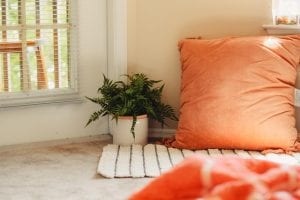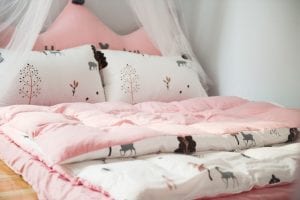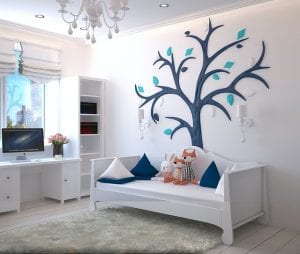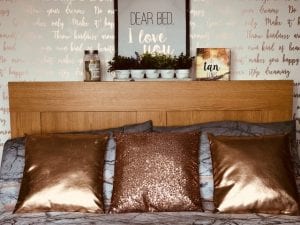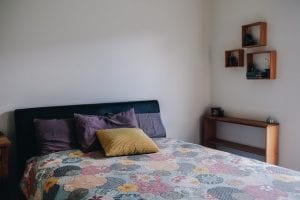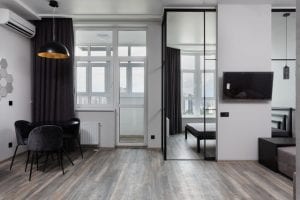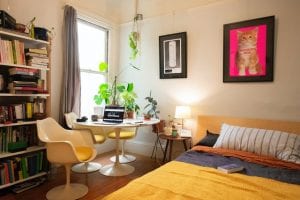Colors can influence our mood and emotions. Colors come in a wide range of feelings and can evoke different responses depending on what you’re going for. Regardless of the room’s size, you can still use your imagination by selecting an eye-catching color scheme that complements the occupants’ age and positively impacts mood.
Your Mood And The Colors In Your Room
The color in your room plays an essential role in your everyday life. Depending on age, gender, and environment, the color you choose for your walls will influence your moods, emotions and affect you in various ways. Specific colors, or even groups of colors, elicit a similar reaction in most people, which is why it’s important to select colors carefully when decorating your home.
Colors For Children’s Rooms
Choosing a color scheme for a child’s bed can be difficult, whether for sleeping or playing. You want something that they can develop into while still having a childish feel to it, so you don’t have to repaint the walls every few years.
Bright, intense colors like primary red, yellow, and orange can cause anxiety and insomnia in children. As a result, picking a color for your children’s room requires some thought.
BOLD RED
Red is an energizing color that can speed up your heartbeat and breathing. It has been shown to energize children and possibly increase concentration. Still, excessive red exposure in some children can cause aggression. As a result, red can be used as a highlight color in a room, particularly if you’re trying to balance cool and warm colors.
ELECTRIC YELLOW
Yellow is a bright color that can be distracting. If you have a child who struggles with bedtime or wakes up early, yellow will likely exacerbate the problem. An overly excited child can find it difficult to calm down in a room that exudes too much of a “daytime” vibe. Yellow looks best in a child’s room when combined with grey, blue, or green.
FLAMING ORANGE
Orange is a happy, vibrant color that has been shown to improve communication and socialization. Children who play in rooms with orange color schemes are more friendly, outgoing, and self-assured. But, too much orange can be overstimulating and have the opposite effect as with any warm color.
DEEP BROWN
Brown is a timeless and earthy color that can make children feel more secure and at ease in their surroundings. Brown can also serve as an excellent backdrop for lighter color splashes, but too much brown can darken a room and make it feel smaller and confining.
JAZZY PINK
This is the most common color scheme for girls’ rooms. While being introduced to rooms with a pink color scheme will help both sexes. Pink is a soothing color that promotes feelings of empathy and nurturing. Pink is associated with a “motherly” feel, encouraging children to be more compassionate and considerate.
GLISTENING PURPLE
Purple encourages introspection, empathy, and spirituality. Purple in a child’s room will help them slow down their fast-paced lives and reflect on others’ thoughts and feelings. Purples can be brightened by using orange as a contrast color. Darker purple tones may also be used to tone downlighter colors like spring green or hot pink.
HARMONIOUS GREEN
Green is a relaxing color that evokes the freshness of nature and outdoor activities. The darker the hue, as with any excellent color, the darker the room. Although a forest or pine green can be daunting and even gloomy, a mint or tea green can actually help calm an upset child.
COOL BLUE
When it comes to boy room colors, blue is always at the top of the list. Of course, being surrounded by this soothing and reassuring color will help both sexes. Blue is often recommended as a room color for children who are prone to temper tantrums. Blue has been shown to reduce anxious people’s heart rate, blood pressure, and breathing rate.
DELICATE GREY
When used as an accent color, grey can be very striking, but having it the dominant color in any room can make you feel lonely. If you want to use grey in your child’s space, you should do so in moderation. Grey accents, for example, can support a bright yellow or orange room.
Adult Room Color Schemes
A bedroom is your personal haven for rest, relaxation, and intimacy. The color you choose for the walls serves as a reminder of how you want to feel in the space. The majority of people prefer quiet and calming colors in their bedrooms. However, some colors that cannot work in a child’s room will work well in an adult’s room. Adults can handle a broader range of colors depending on who uses them. So choose one of these trendy hues to set the right mood and make your bedroom pop.
SOFT PEACH
A black rug or a dark accent wall with peach is a fantastic combination that will make your bedroom stand out. Peach also looks great against a light blue or mint green accent wall. It goes for almost every color or material of the furniture. A good throw/accent rug can really tie a room together.
LIGHT BLUE
This is a good ideal for beach-themed décor. In the bedroom, hang an anchor or use gentle oceanic tones and art pieces. Alternatively, to create a soothing effect in the bedroom, scatter warm brown furniture throughout the room with a blue wall. This is a perfect color for a bedroom if you like the sea.
BRILLIANT GREY
A soft, ice edge will be added to your bedroom with a light grey. You may complement it with elegant gold accents to tie the room together. An olive or jade color palette and accent wall will work wonders in creating a visual masterpiece with grey color.
MINT GREEN
Summer, dreams, and the ocean are only a few of the many associations this hue evokes. It’s soft and elegant, but it’s also bold and draws attention to space. It goes well with brown or black, so no matter what furniture you have in the room, it will look great with this color.
ELECTRIC GOLD
You can pull any bedroom space together with gold highlights, borders, white pillows, and a calming blue accent wall. The warmer tone also has a soothing effect, ideal for getting a good night’s sleep.
SIMPLE WHITE
Nothing seems to be more inviting or cleaner. It’s also one of the most inspiring bedroom wall colors for the artistic mind and spirit. It’s your canvas, so add other bits or decor to bring out the bold, bright white.
VIBRANT VIOLET
This is a perfect option for those who don’t want to overpower a bedroom. It’s light, soothing, and goes well with other colors. You can use it to tie the room together by painting the whole bedroom violet or a couple of accent walls. It’s understated and pairs well with layering.
INTENSE BLACK
This is the definition of trendy and elegant. Black paint, headboards, accent walls, and a thin white border along the floorboard will set your bedroom apart from the rest of the house.
VIVID YELLOW
Every time you walk into your bedroom, the color creamy yellow will make you feel happy and cozy. The walls pop, and you can use shades, lamps, and furniture to balance the light in darker tones/hues.
Bedroom Colour Schemes In General
Your bedroom colors and mood should integrate shades that add a general sense of peace and restfulness to space. Remember the room color psychology with colors like green, blue, and purple for their soothing qualities when choosing a room color for your bedroom.
Colors To Incorporate Into Your Bedroom
Green is thought to help with fertility and stress relief, making it an excellent bedroom option.
Blue is thought to lower blood pressure while also slowing breathing and heart rate.
Lighter shades of purple, such as lavender and lilac, still have a calming effect in the bedroom without being too cold.
Tones that are neutral, earthy, or skin-toned are soothing and foster positive energy flow.
Use the lighter, pastel, or muted shades of whatever hue you choose.
Stop These Colours In Your Bedroom
Orange is a vibrant, energizing color that is opposed to the restful atmosphere of your bedroom.
Pastel Blue on the walls may feel uncomfortably cold, particularly in a room with little natural light.
A color that is too bright or bold will cause you to feel alert rather than relaxed.
Use flatter paints that have a lighter feel than glossy paints.
Keep up with Bargain Dumpster for the most up-to-date home improvement tips and tricks. Learn how to be motivated and innovative and how to do things without a lot of time and effort.




